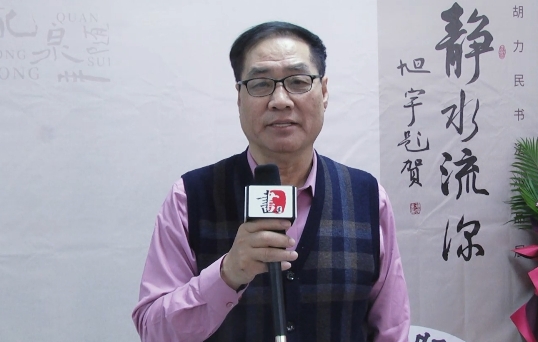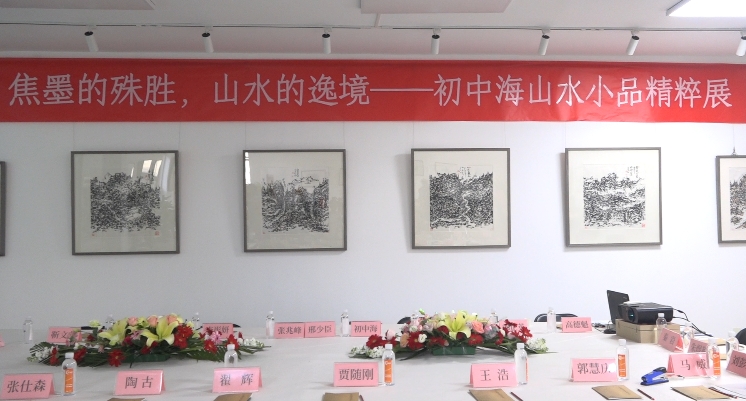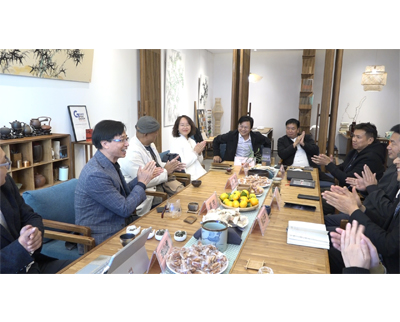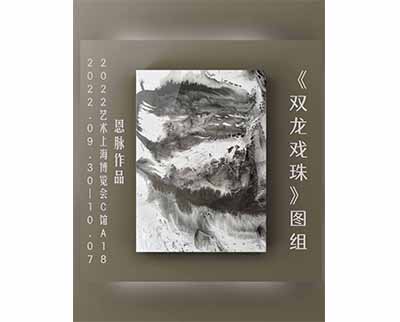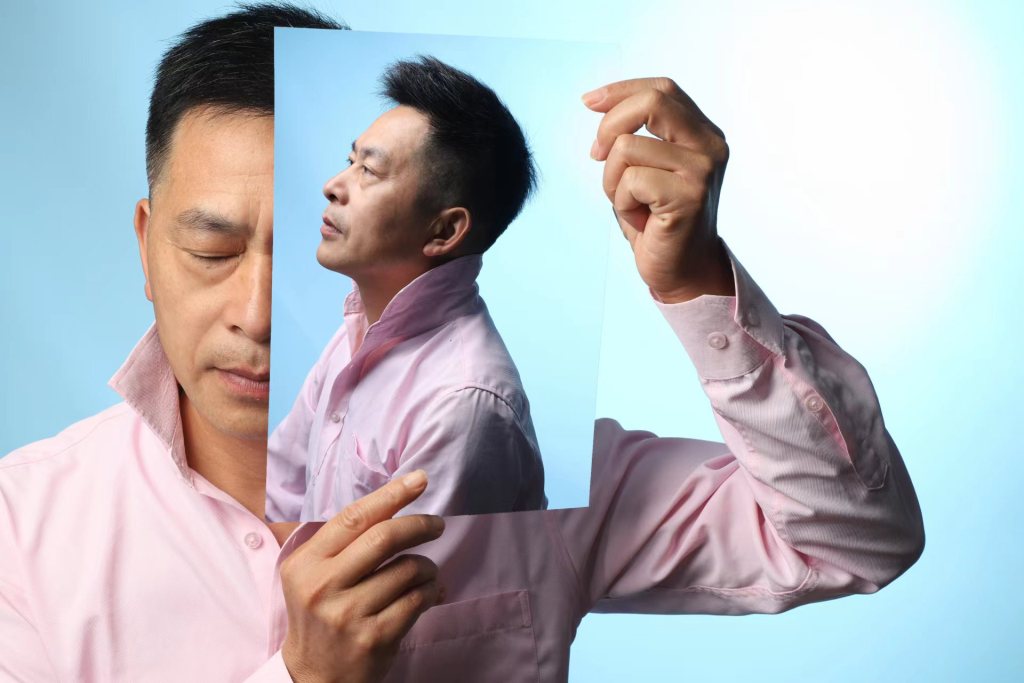自由的尺度·第五回 —— 中国当代水墨世界巡展(北京站)
BOUNDARY OF FREEDOM · FIFTH ROUND ——CHINESE CONTEMPORARY INK WORLD TOUR (BEIJING)
参展艺术家(按姓氏笔画排名):王冬龄、王秋人、王舒野、田黎明、白明、刘知白、刘巨德、刘子建、刘邓、岛子、杨键、佘文涛、邱振中、陈光武、张大我、李永波、吴家骅、周韶华、茅小浪、郑连杰、侯拙吾、侯珊瑚、钟跃英、姬子、贾西贝娃、黑鬼、鲍蓓、樊洲
Artists(in the order of the number of strokes in the surnames):Wang Dongling,Wang Qiuren,Wang Shuye,Tian Liming,Bai Ming,Liu Zhibai,Liu Jude,Liu Zijian,Liu Deng,Dao Zi,Yang Jian,She Wentao,Qiu Zhenzhong,Chen Guangwu,Zhang Dawo,Li Yongbo,Wu Jiahua,Zhou Shaohua,Mao Xiaolang,Zheng Lianjie,Hou Zhuowu,Hou Shanhu,Zhong Yueying,Ji Zi,Jia Xibeiwa,The Dark Ghost,Bao Pei,Fan Zhou
策展人:王春辰
Curator:Wang Chunchen
出品人:贾廷峰
Producer:Jia Tingfeng
展览时间:2018年10月13日—10月19日
Duration: 13th Oct. 2018 — 19th Oct. 2018
开幕酒会:2018年10月13日(周六)15:30
Opening reception: 15:30,13th Oct. 2018
展览地点:太和艺术空间
Exhibition Venue: Taihe Art Gallery
地址:北京市朝阳区酒仙桥路798艺术区2号院B10
Add: B10 798 Art Zone Jiuxianqiao Road Beijing.
Tel: 010-59789856
Email: taiheyishu@163.com
Website: www.taiheart.com
前言
王春辰
水墨作为中国本土生长的一种艺术形式,历史源远流长,绵延至今。自20世纪以来,在与全球化的艺术交流与互动中,水墨艺术发生着自身逻辑的巨大演化与推进。在水墨的理解和认识上,那些来自国际的其他艺术类型都成为水墨的比较对象,也成为反观自身的镜像。
水墨的生命力在于艺术家群体的自我反思和孜孜不息的探索实践。我们无法想象一种千年以上的艺术形式,如果不在当代进行深刻而全面的反省,它如何焕发出新的生命、如何在今天如此丰富的艺术生态里凸显其特殊的艺术魅力。我们知道,在过去的一个多世纪里,中国历经多元文化的冲击、国运跌宕、战争以及社会政治运动,而其中针对中国水墨艺术的讨论、争论不绝于耳,经常是这样的争辩让中国人心潮澎湃,各种观点和立场针锋相对。如果说二十世纪的全球艺术是一个大变动大转化大发展的时代,那么关于中国水墨的讨论也是如此,甚至可以说关于一种特定艺术媒介的讨论,也就是这个中国的水墨了。
在中国对它的讨论,不仅来自于艺术家群体,还来自于中国早期的政治家们,如晚晴倡导改良的康有为,民国初年倡导新学的陈独秀等等,而民国早期留学欧洲的徐悲鸿等也提出改良中国画的问题,到了1950年代有“新国画运动”,到了80年代有“中国画穷途末路”之争,到了90年代有关于水墨绘画是否以笔墨为根本的争论,到了21世纪是关于“新水墨”的讨论。对于它的世纪之辩,足可以是历史的奇观。
那么,对于不了解这些背景的国际观众,可能今天看到的仅仅是这些世纪之争的结果,或看到的是它对中国水墨影响的一个侧面。那么,我们今天需要说的是什么呢?历经百年的陶冶和筋骨磨砺以及我们自身对这种水墨艺术的重新认识,结论是它凤凰涅槃了。
其根源在于东方这片土地上,有一批真正的体悟自身、栖息在芸芸众生中、刻骨铭心地视水墨为生命本源的人们在坚守着水墨的文化底蕴、水墨与个体价值的关联、水墨与人性不相分割的基因关系,最主要是在中国有一批不在主流的意识体系之内的人没有放弃他们身为中国人的那种生命坚强意志驱动他们为水墨的生命力焕发走下去做下去。
在这里,我们想证明的是,不是水墨作为艺术语言形式,它有其笔法、章法、画论支撑,也不说它有新的艺术理论资源来打破它的媒介限制,也不谈它大量吸收了现代艺术的创作手法,而是昌明它所具有的中国人本价值,即作为自由的价值。如果你还滋养在一种源自漫漫远古时期的信念中,如果你还领受着“天行健,君子以自强不息”这样的古训,如果你没有沉落在强势话语的灌输中,那么我们就会发现水墨成为了中国人安身立命的场域,尺幅之间,包含了天地宏阔的自由。水墨已经不仅仅是一幅作品的含义,它是中国人寄寓情思感悟与个体生命的庇护所;如果说中国人在20世纪遭遇了国难家亡的悲剧、遭遇了文化断裂、思想饱受冲刷的苦涩,那么水墨就成了一批中国人寻求个体自由的最后领地。这里的自由是不苟合于思想禁锢的自由,是不媚俗于陈规陋习、僵化顽固的自由,是出污泥而不染的自由,是悲悯天地苍生的自由,是化解心头郁结的自由,是不悖逆自然大道法则的自由,是通达普世人性价值的自由。
自由,总是与羁绊伴随。正因为如此,才有了20世纪的旷久争论,才有了不苟合于趋魅世俗的真水墨。自由的水墨绝非是天恩赐予的,它只能是苦难中磨炼下来的。水墨之自由全在于人性不曾泯灭,全在于心灵的自由,全在于对时代隐秘的洞察。如果自由是人的自然属性,是人之为人的自然需求,那么,水墨作为艺术提供了这样的可能性,提供了艺术家进入自由空间的可能性。但是,我们也要说到水墨艺术具有世界上最庞大的创作群体,由于其笔墨纸砚工具简单,从事水墨绘画创作的人数之多,史无前例,汇流成浩浩荡荡的奇观,但这些依然不足以说明水墨的自由,因为真正自由的水墨必是终生历练的事情,不仅出神入化、得心应手,而且是品格高雅、道境至上的水墨。我们诉求的自由的水墨是为了生命价值的自由,不是消遣的水墨,而是与之悲喜同在的水墨,是俯仰天地、与命运呼吸的水墨。
如果我们理解了20世纪对于中国的含义,那么我们就更加深切理解水墨对于中国的意义和丰富的潜台词。我们这里倡导的自由的水墨必将是未来历史的水墨,而不是在现世中名利场里的那些浮光掠影的水墨——是那些水墨坏了水墨的真实价值和生命意义。生命需要在沉静中积孕不可遏制的生命力,让生命之轻不再沉重。
在21世纪的艺术流变中,我们回望东方,瞭望世界,水墨不再孤立,不再被诅咒束缚,它开始日渐凸显内蕴的意义——自由的生命才是价值,而生命之自由才能创造自由的水墨,维系着水墨艺术的生命根基。基于此,我们策划了四次《自由的尺度——中国当代水墨艺术》,它们分别在巴塞尔、美洲、亚洲巡展,向国内外观众展示中国的当代水墨,使得国内国际观众深为震撼,让他们看到了当代水墨的卓越成果,展现了其非凡的美学特质、语言表现及观念探索。
今天,我们再次策划《自由的尺度(第五回)——中国当代水墨艺术走向欧洲》,持续向同样拥有悠久艺术历史的意大利观众来展示来自东方的特殊艺术,展示一种完全不同于古典中国画的艺术,它的独特性可以说是国际艺术景观世界中的新大陆,它将打破人们对传统水墨艺术的认识,为当代艺术的内在丰富性增添新的元素。通过这二十几位艺术家的作品,让我们看到历史的叙事结构可以有另外的逻辑,在我们熟悉的视觉经验之外,还有这样富有创造性的艺术存在。我们是希望通过广泛展示这些中国当代水墨艺术来与国际艺术界对话和交流,以艺术家的个体创造来揭示中国当代社会与人的价值关联,以此来探索一种具有历史基因的艺术如何在全球化时代里演变着、如何再生着,更重要的是通过观看这些当代水墨作品来感悟中国的文化定义、来探究人本主义的中国文化。
2018年4月11日 于中央美术学院
Preface
Wang Chunchen
Ink is an art form that is native to China, with a long-standing and well-established history that has stretched unbroken into the present. In global artistic exchanges and interactions since the beginning of the twentieth century, there has been a major evolution in the logic of ink art. In our understanding and comprehension of ink, other forms from the international art world became comparisons or mirrors for the medium.
The vitality of ink lies in the continued self-reflection and diligent exploration of artists. We cannot imagine how an art form that is thousands of years old could spark new life or showcase its distinctive charms in such a rich artistic environment if it were not being deeply and completely rethought in the contemporary moment. In the last several centuries, we know that China has experienced multiple cultural collisions, shifts in national destiny, wars, and social and political movements, and the discussions and debates about Chinese ink art that took place over these centuries still linger. These arguments filled Chinese people with deep emotion as they debated diametrically opposing viewpoints and ideas. If global art in the twentieth century was a time of big changes, big transformations, and big developments, then this was also true of discussions of Chinese ink.
The discussion of ink in China did not just occur amongst artists; China’s early politicians also engaged with the topic. In the late Qing period, Kang Youwei advocated for the reform of ink, and in the early Republican period, Chen Duxiu promoted New Learning. Xu Beihong, who studied in Europe early in the Republican period, also raised the issue of reforming Chinese ink painting. There was also the New Chinese Painting Movement in the 1950s, the 1980s debate about “the end of Chinese ink painting,” the controversy over whether ink and brush were the foundation of ink painting in the 1990s, and the twenty-first century discussion of New Ink. These grand debates about ink art could be considered spectacles of history.
International viewers who do not understand this background may just see the results of these heated debates, or a portion of their influence on Chinese ink, so what do we need to say today? After one hundred years of molding, tempering, and re-understanding ink art, the medium has risen like a phoenix.
Its roots can be found in the land of the East, and there is a group of people who truly understand themselves, reside with all things in the universe, and deeply believe that ink is the source of life. They adhere to the cultural underpinnings of ink, the connections between ink and their individual values, and the inherent and inseparable relationship between ink and human nature. Most importantly, China has a group of people outside the mainstream system who have not abandoned their strong living will as Chinese people in continuing to drive the vitality of ink.
Here, we do not want to demonstrate ink’s place as an artistic language or form, supported by its brushwork, compositional structures, and painting theories. We do not want to say that new art theory has been proposed, which will break through the restrictions of the medium, and we don’t want to talk about ink’s broad absorption of the creative methods of modern art. Instead, what we want to do is elucidate ink’s inherently Chinese value: freedom. If you are still nourished by the faith of remote antiquity, if you still accept that “Heaven, in its motion, gives strength. The superior man, in accordance with this, drives himself to ceaseless activity,” and if you have not become ensnared by the infusion of discourses of power, then we discover that ink has become a lifelong pursuit for the Chinese people. The freedom of the vast universe exists within these small paintings. Ink has meaning not only for single works; it is a haven of mood, understanding, and individual life for the Chinese. In the twentieth century, the Chinese people have endured the tragedy of national crisis and the pain of cultural fissures and intellectual erosion, so ink became the last refuge for Chinese people pursuing individual freedom. Here, freedom is neither tied to intellectual suppression nor tarnished by outmoded and rigid ideas; it is a freedom that grows from the mud but remains unsullied. It is a freedom that shows pity for all living things on earth. It is a freedom that reconciles mind and heart. It is a freedom that does not rebel against the laws of nature and the Dao. It is a freedom that connects to universal human values.
Freedom is always accompanied by constraints, and precisely because of this, we have the twentieth century’s long-standing disputes about the medium and a true ink that is not tied to the vulgar world. The freedom of ink is not bestowed by the kindness of heaven; it can only be refined in suffering. The freedom of ink lies entirely in the indomitability of the human spirit, the freedom of the soul, and insight into the mysteries of one’s time. If freedom is a natural property of man and a natural requirement for human interaction, then ink as an art form provides this possibility, the possibility for the artist to enter a space of freedom. However, ink art has the world’s largest creative cohort, and due to the simplicity of the tools of ink, brush, paper, and inkstone, an unprecedented number of people are making ink paintings. They come together to create a seemingly endless landscape, but this doesn’t entirely explain the freedom of ink, because truly free ink must be refined over a lifetime. It is not simply achieving mastery or even skilled proficiency; it is achieving refinement and elevation through ink. We pursue a free mode of ink for the freedom of living values. Ink is not a pastime; it is an art form with both joy and pain. It is a medium that makes you look up to heaven and breathe in your destiny.
If we understand the meaning of the twentieth century for China, then we profoundly understand ink’s meaning for China and its rich subtext. Here, the freedom of ink that we promote must be past and future ink, and not the superficial ink of the present, focused on fame and fortune—that kind of ink ruins the true value and living meaning of ink. Life needs to nurture unrestrained vitality amidst calm, lightening the weight of life.
With the developments in art in the twenty-first century, we looked back to the East, while keeping an eye on the world. Ink is no longer isolated, no longer cursed; it has begun to reveal its intrinsic meaning—only then is the freedom of life valued. Only the freedom of life can create the freedom of ink, maintaining a living foundation for ink art. Based on this, we have curated four editions of “Boundary of Freedom: Chinese Contemporary Ink,” which have traveled to Basel, America, and Asia, bringing Chinese contemporary ink to audiences in China and abroad. Viewers from around the world have been amazed by the wonderful products of contemporary ink and their extraordinary aesthetic qualities, linguistic expressions, and conceptual explorations.
We have now curated the fifth edition of “Boundary of Freedom,” subtitled “Chinese Contemporary Ink Towards Europe.” We are presenting a distinctly Eastern art, but one that is entirely different from classical Chinese painting, to the Italian public, a people with a similarly long artistic history. The unique quality of this exhibition could be considered a new territory in the spectacular world of international art; it will break with people’s understanding of traditional ink art, adding new elements to the inherent richness of contemporary art. Through the work of these two dozen artists, we see that the narrative structures of history can take on another logic; there is a richly creative artistic existence outside of our familiar visual experience. We hope to engage in dialogue with international art through the wide exhibition of Chinese contemporary ink art. We have used the individual creations of these artists to reveal the relationship between Chinese contemporary society and Chinese people, exploring how an art form with a long history can evolve and regenerate in an era of globalization. More importantly, through these contemporary ink works, viewers will come to appreciate China’s cultural position and explore human-centric ideas in Chinese culture.
April 11, 2018
Central Academy of Fine Arts
展览作品欣赏:
王冬龄 Wang Dongling 乱书·韦庄诗·江雨霏霏 Chaotic Scribbling·Wei Zhuang·Heavy Rain 97×180cm 纸本水墨 Chinese Ink on Paper 2017
王秋人 Wang Qiuren 丁酉云山 Cloud and Mountatin 纸本设色 Color on Paper 205x70cm 2017
王舒野 Wang Shuye 时空祼体·即(118) Space-time nude Identical(118)墨、朱墨、麻纸 Ink, red ink on jute Paper 114X83cm 2018
田黎明 Tian Liming 都市男孩 City Boy 139X69CM 纸本设色 Ink and Color on Paper 2017
白明 Bai Ming 茧像·地图 The Map of Silkworm Cocoon 98x198cm 纸本水墨 Chinese Ink on Paper 2018
刘知白 Liu Zhibai 洗马印象 The View of Xima 69x138cm 纸本水墨 Chinese Ink on Paper 2002年
刘巨德 Liu Jude 追日草 The Sun-Chasing Grass 水墨纸本设色 Ink Colors on Rice Paper 141cm×362cm 2011
刘子建 Liu Zijian 石墨镌华--19 Graphite Engrave China 19 200x120cm 纸本水墨 Chinese Ink on Paper 2017
刘邓 Liu Deng 泰一Ⅱ Aplomb一Ⅱ 皮纸 丙烯 propene colour on leather paper 221×215cm 2013
岛子 Dao Zi 灵泉苦竹 Suffering Bamboo Beside Spiritual Springs 纸本水墨设色 Ink and Color on Paper 137x69cm 2015
杨键 Yang Jian 钵 Alms Bowl 纸本水墨 Chinese Ink on Paper 120x86cm 2017年
陈光武 Chen Guangwu 摹写王羲之 Facsimile Wang Xizhi 145×365cm 纸本水墨
张大我 Zhang Dawo 生命玄线之三 Life Archeline No.3 400×118cm 纸本水墨 Chinese Ink on Paper 2017
李永波 Li Yongbo 无垢白莲明光 Shining Forth from the Untainted White Lotus 水墨 Ink-wash on Chinese paper 192X100cm 2017
吴家骅 Wu Jiahua 水墨日志8 Chinese Ink Journal No.8 70×138cm 水墨纸本 Chinese Ink on Paper 2018
周韶华 Zhou Shaohua 大漠浩歌——战旱极 Great Songs of the Desert Fighting the Severest Drought 纸本水墨 Chinese Ink on Paper 247cm×123cm 2000
茅小浪 Mao Xiaolang 草虬 Wilderness Dragon 非宣水墨 Non-rice Paper Ink 96×135cm 2017
郑连杰 Zheng Lianjie 腥红色的天空 Scarlet Sky 纸本设色 Ink and Color on Paper 33×137cm 2013
侯珊瑚 Hou Shanhu 态象系列TW1616 Dynamic & Phenomenon seriesTW1616 Chinese Ink on paper 纸本水墨 180×96cm 2016
钟跃英 Zhong Yueying 浮现 Emerge 纸本水墨 Chinese ink on paper 188×94cm 2016
姬子 Ji Zi 永恒的流动 Eternal Flowing 182.5x145cm 纸本水墨 Chinese Ink on Paper 2013
鲍蓓 Bao Pei 纽约的雨, 是流亡者的雨之二 Rain and Tear in New York City No.2 纸上综合材料 Mixed Media on Paper 132m x102cm 2014年
樊洲 Fan Zhou 韵律山水 Rhythm Landscape 245x125cm 纸本水墨 Chinese Ink on Paper 2016
-
城韵华彩正青春——八位青年画家的东莞文艺新实力联展盛大启幕
2025年9月13日上午,由东莞市文学艺术界联合会、东莞文学艺术院主办的“东莞文... -
“以梦为马——刘长静个人作品展”盛大开幕,艺术之梦绽放宋庄
“以梦为马——刘长静个人作品展”盛大开幕,艺术之梦绽放宋庄 -
从荆浩画院到荆浩东方艺术奖:华鼎奖集团的文化战略布局
-
城韵•华彩——东莞青年画家美术作品联展开展
由东莞市文联、东莞文学艺术院主办的2025年“东莞文艺新实力”展览展演扶持项目“... -
重识巨匠:许铁生与中国现代艺术的南洋之路
2025年8月,《重识许铁生》展览于新加坡品艺画廊隆重开幕。这是自20世纪80年... -
展讯 | 以梦为马——刘长静个人作品展
以梦为马——刘长静个人作品展将于8月23日在京与观众见面


